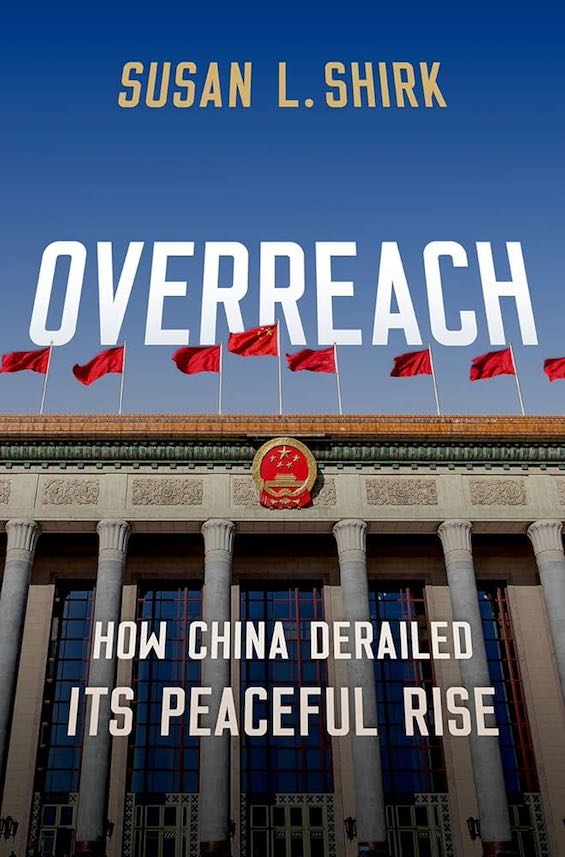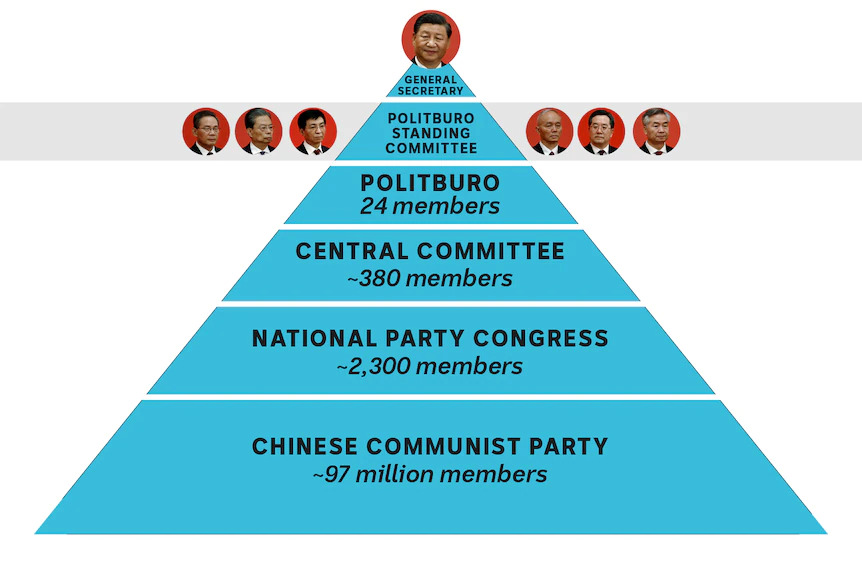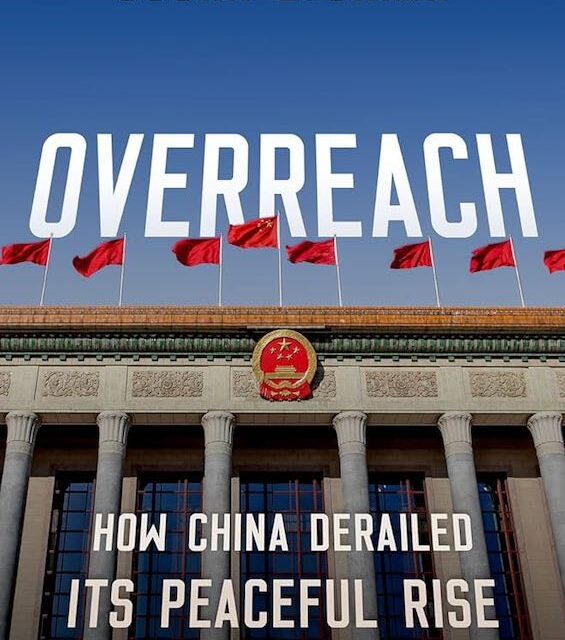
Many Americans seem to assume that the current tension between the US and China arose only with the election of Donald Trump in 2016—or with the rise of Xi Jinping to the top of the Chinese Communist Party (CCP) four years earlier. But that’s far from the case. In Overreach: How China Derailed Its Peaceful Rise, veteran China analyst Susan Shirk reveals the fateful changes that played out in Beijing beginning a decade earlier. Bringing to bear a half century’s experience as a student of Chinese politics, Dr. Shirk digs deeply into the weeds of the country’s opaque political system to document the emergence of its aggressive new stance in the world—and the growing risk of war between the US and China.
Estimated reading time: 5 minutes
Missteps in Chinese policy
Of course, history tells us that whenever one great power’s influence is fading and a rival’s is growing, conflict is inevitable. But the competition doesn’t necessarily require military action. Yet the risk of a military clash between the US and China has grown markedly over the past two decades. Certainly, the US shares some responsibility for this shift. But, as Dr. Shirk makes clear, a series of missteps in Chinese policy—none of them inevitable—has been the determining factor. And the first of those missteps predated the ascension of Xi Jinping by a decade. It was under his predecessor as General Secretary, Hu Jintao, that the pattern was set. And in Overreach, the author explains how this new course in Chinese foreign and military policy emerged from the bureaucratic muddle at the top of the Chinese Communist Party (CCP).
Subscribe now. No ads, and it’s entirely free. >>>
As Dr. Shirk makes clear, the root cause of the problem, if any single factor can be identified, was Hu Jintao’s weak leadership. Clearly, Hu was saddled with uncooperative holdovers from his much stronger predecessor, Jiang Zemin. And he faced constaent meddling by the security forces and propaganda department. But Hu proved unable to corral the clashing agendas of the eight others on the Politburo Standing Committee. Each of them had responsibility for one policy area—and allowed the others to pursue his own policy goals. The budget ballooned, corruption flourished, and the country was soon at odds with its neighbors over the South China Sea, Taiwan, North Korean aggressiveness, and the islands disputed between China and Japan. By the time Xi Jinping assumed the top job in 2012, the Chinese Communist Party—and the country—were in crisis.
Overreach: How China Derailed its Peaceful Rise by Susan L. Shirk (2022) 410 pages ★★★★☆

China’s overreach, America’s overreaction
Dr. Shirk’s thesis is straightforward. Beginning in Hu Jintao’s first term as General Secretary of the CCP (2002-7), gathering momentum during his second term (2007-12), and then steadily growing riskier and more aggressive under Xi Jinping (2012-), China’s foreign and military policy apparatus took an increasingly nationalistic stance toward its neighbors and the world at large. At the same time, the country adopted draconian domestic security measures, both on the ground and online. “The center” lashed out not just in response to violent protests in Xinjiang and Tibet but throughout Chinese society. The level of social control hasn’t reached the level of totalitarianism. But the signs are disquieting. Dr. Shirk defines this as overreach. And “China’s overreach has triggered an American overreaction that is almost as self-defeating.”
In a concluding chapter to her book, the author cautions the Biden Administration and the Congress against taking any further steps that would make China turn even more resolutely inward—because the more the mandarins in Zhongnanhai heed the clamor of the Chinese public—clamor they’ve generated with their own propaganda—to strike out against their perceived enemies, the greater the risk of war between China and the West. However, Dr. Shirk advocates a series of thoughtful steps American leaders might take to reduce this risk. Steps that, sadly, many loud voices in Washington seem unwilling to take.
About the author

According to her page at the University of California, San Diego, Susan L. Shirk is research professor and founding chair of the 21st Century China Center at UC San Diego. She is one of the most influential experts working on U.S.-China relations and Chinese politics. She is also director emeritus of the UC Institute on Global Conflict and Cooperation (IGCC). Dr. Shirk first visited China in 1971 and has been teaching, researching, and engaging China diplomatically ever since. From 1997-2000, she served as Deputy Assistant Secretary of State in the Bureau of East Asia and Pacific Affairs under President Bill Clinton, with responsibility for China, Taiwan, Hong Kong and Mongolia.
For related reading
Be sure to check out The Beautiful Country and the Middle Kingdom: America and China, 1776 to the Present by John Pomfret (A revealing history of U.S.-China relations) and The Dean of Shandong: Confessions of a Minor Bureaucrat at a Chinese University by Daniel A. Bell (An insider’s view of the Chinese political system). Both books are useful complements to Dr. Shirk’s.
You’ll also find related titles at:
- 30 insightful books about China
- Good recent books about American foreign policy
- Gaining a global perspective on the world around us
And you can always find my most popular reviews, and the most recent ones, on the Home Page.


























